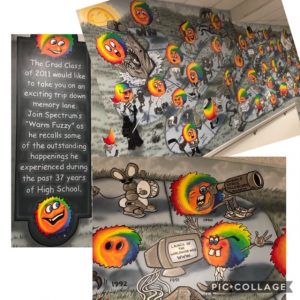What? So What? Now What?

OLYMPUS DIGITAL CAMERA
“history” by lert is licensed under CC BY-NC-SA 2.0
What? I will start with a brief annotated bibliography of the three assigned readings:
Weller, M. (2018, August). Twenty Years of Edtech. EDUCAUSE Review, 53(4). Retrieved from https://er.educause.edu/articles/2018/7/twenty-years-of-edtech
Weller points out how poorly the edtech field has documented its history, and attempts to identify the most significant technology in education each year over the past twenty years. Beginning with Wikis in 1998, he mapped the past twenty years through the highs and lows of e-learning, learning objects, e-learning standards, OER, blogs, LMS’s, Video, Web 2.0, Virtual worlds, e-portfolios, social media, connectivism, PLE, MOOC’s, Open Textbooks, Learning Analytics, Digital Badges, AI, and Blockchain. Over the twenty years we see uncertainty and optimism regarding what technologies will mean for education and society. We see that the potential of certain technologies are sometimes not realized immediately, but can resurface years later. We see dreams of creating dynamic, open and respectful spaces, limited by the realities of contracts, pedagogical ideologies, and issues around free speech and offensive online behavior. I thoroughly enjoyed the article and appreciated the overview of technological developments, especially since I felt disconnected from the progress of technology through the 2000’s when we began our family. I kept thinking how this article could be transformed into an illustrated timeline like the one seen in the halls of Spectrum.

Zawacki-Richter, O., & Naidu, S. (2016). Mapping research trends from 35 years of publications in Distance Education. Distance Education, 37(3), 245–269. http://ezproxy.library.uvic.ca/login?url=https://doi.org/10.1080/01587919.2016.1185079
This analysis attempts to identify themes in distance education by using the text-mining tool Leximancer over the past 35 years, by grouping titles and abstracts over 5-year periods. With the first distance Universities established in the late 1960’s, by the 80’s distance education was considered a scholarly field. Dating back to 1980, Zawacki-Richter and Naidu discovered the following trends: Professionalization and institutional consolidation (1980-1984), instructional design and education technology (1985-1989), quality assurance in distance education (1990-1994), student support and early stages of online learning (1995-1999), the emergence of the virtual university (2000-2004), collaborative learning and online interaction patterns (2005-2009), and interactive learning, MOOCs and OERs (2010-2014). Of particular interest for me was the alternating pattern of the research themes the authors discovered when analyzing journal articles in Distance Education. Every five years the focus of research alternated between an institutional and an individual research perspective. This reminds me of my teaching practicum over 20 years ago, when the idea of the pendulum swinging in education was first introduced to me.
Peter, S., & Deimann, M. (2013). On the role of openness in education: A historical reconstruction. Open Praxis, 5(1), 7–14. https://doi.org/10.5944/openpraxis.5.1.23
Peter and Deimann consider the idea of what “open” in education means by going back to the middle ages before educational institutions, and considering who has had access to information through the ages. The availability of knowledge or education varied during the middle ages as religious views and strongholds changed, and as economics began shaping the generation of printed works. During the Renaissance Penny Universities sprung up in coffee houses allowing access to information and the opportunity for public discussions and debates. In 1836 the University of London Royal Charter encouraged individuals from every walk of life to pursue an education which lead to the first “Open University” in 1858. The article closes by suggesting that education shifts from “pure” openness towards “pretended” openness. The question could certainly still be asked today: Open to whom?
So what?
How has the evolution of open education and EdTech affected my career in education, and how has this in turn affected the learners in our education system?
It is difficult to summarize how EdTech has affected my 21 year career as an educator. Perhaps I can provide a snapshot of teaching and learning from 20 years ago and compare it to my experience today. Twenty years ago I was completely dependent on textbooks and the resources provided by the school. Computers were mainly used to create word documents, emails or to conduct research for projects, however there were only a few computers available in the library for the entire school. Today, I can help my students become independent learners and problem solvers by encouraging them to use technology in the classrooms (please have your phone out during class!). I do not assign a textbook and, in fact, I rarely refer to a text book for my lesson development (although I still offer them to students who appreciate this method of learning). I can promote critical thinking and inquiry with confidence as I do not need to be the expert of all things. Finally, there is much more variety and student engagement in my classroom today than twenty years ago because of technology and the availability of information, teaching resources and learning tools. I would be remiss to ignore the challenges technology can present, such as increased student distractions, unavailability of individual chromebooks or ipads (we are currently at a 3:1 student to device ratio in our school), and the sheer task of staying up to date with emails, shared files, and new apps. Perhaps the most time consuming is staying up to date on recent scientific discoveries and developments, for example, in the areas of nutrition and genetics. With the availability of information comes the responsibility to be up to date and relevant in my teaching.
Have my opinions or perspectives changed after doing the readings?
It has become very clear that with all the opportunities and options that technology affords, I will need to be thoughtful and intentional in the ones I choose to use in my classroom.
Now What?
How can I take what I have learned and apply it to my teaching practice?
- Weller’s article reminds me of the wealth of opportunities that technology can provide for both me and my students. Perhaps most of all, this article reinforces my commitment to help my students be independent learners, problem solvers and critical thinkers by modelling these attributes through appropriate use of technology in the classroom.
- Zawacki-Richter and Naidu’s article reminds me of the delicate balance between educational content and relationships. Focusing on one too closely will be to the detriment of the other.
- Peter’s article highlights that I must have a critical eye when it comes to open education and resources: Do all my learners have access to the technology and resources at school and at home?